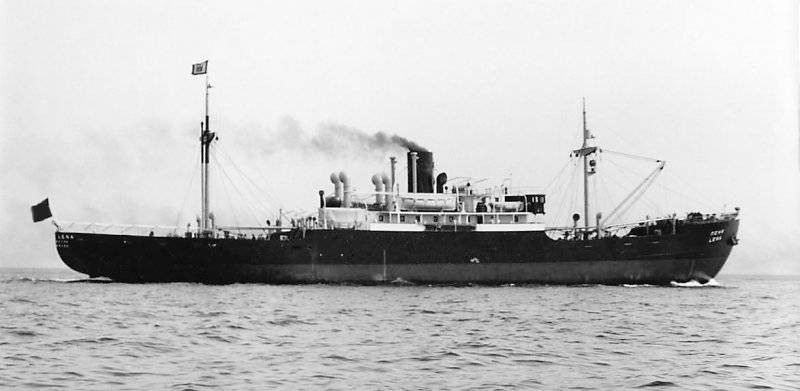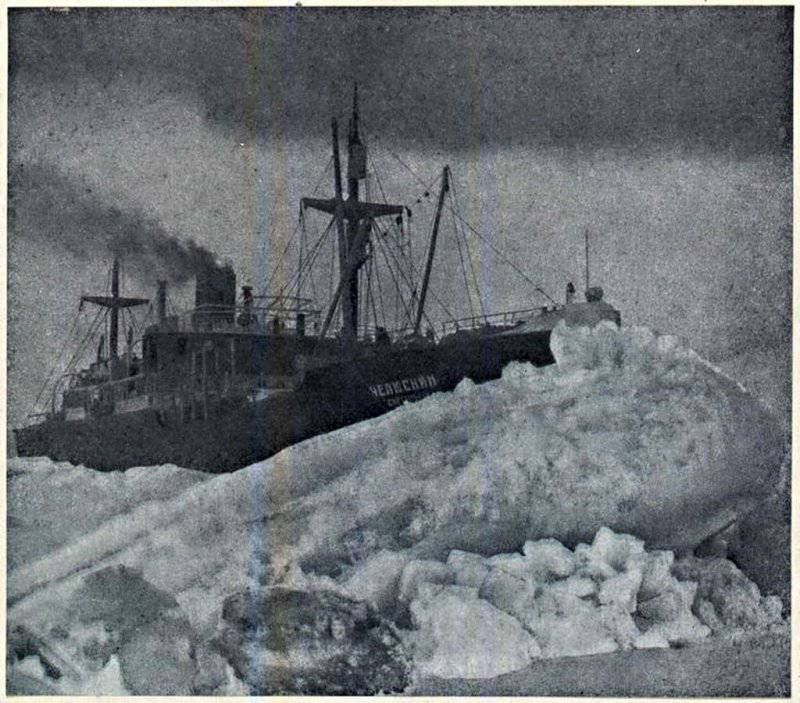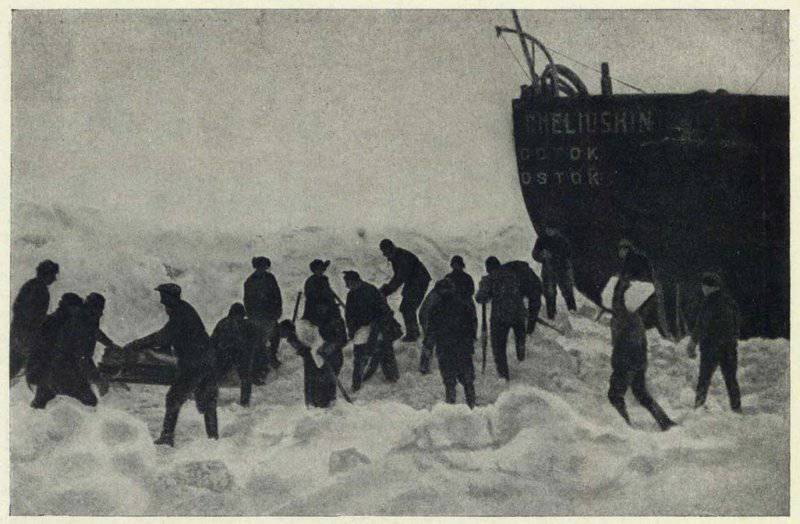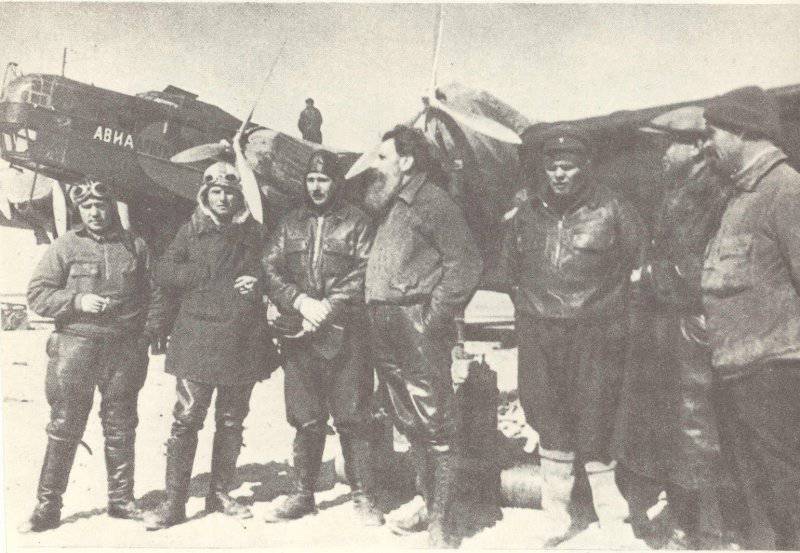What do we know about Chelyuskin?
Several decades ago, practically every schoolboy knew about the Chelyuskin expedition and the tragedy that had happened to it. But few even from the adult population could answer the question exactly: what was the purpose of this expedition? Indeed, really: adults, quite normal people, didn’t intend to deliberately float the ship, so that they could test the strength of the spirit in the ice camp ...
However, before dwelling on goals in more detail, you need to start from the very beginning. In an effort to implement the idea of developing the northern and eastern regions of the state, the Soviet government in 1928 created the Arctic Government Commission, which was supposed to oversee the creation of aviation and naval bases on the coast of the Arctic Ocean. Its competence was also the regulation of the movement of ships. The commission was headed by the commander-in-chief of the USSR Armed Forces S. Kamenev. The commission included pilots and scientists. The first significant result of the commission's work was the rescue of the members of the Nobile expedition, who suffered an accident on the Italia airship. In addition, the commission made a lot of efforts to rescue the Soviet steamer Stavropol and the American schooner Nanuk, which had to spend the winter in the ice.
In order to ensure the delivery of goods to the most remote regions, it was necessary for the Northern Sea Route to go the distance from Europe to Chukotka in a relatively short period of time. The first such expedition was made by the icebreaker Sibiryakov in 1932. But it must be said that the icebreakers had little opportunity in terms of transporting large loads. And in order to carry out cargo transportation, which was necessary to ensure remote areas, large ships with high loads were required, which would be adapted to sail in the harsh conditions of the North. As a result, the Soviet leadership came to the conclusion that the Chelyuskin steamship might well be suitable for solving such problems. It was built in Denmark in the year 1933 specially commissioned by the Soviet foreign trade structures.
Initially, the ship had a different name - “Lena”. The steamer had a displacement of 7,5 thousand tons and was launched in the early summer of the 1933 of the year. The ship 5 arrived in Leningrad on June, there it was given a new name - “Chelyuskin”, in honor of the Soviet explorer of the north and navigator S. Chelyuskin. The ship immediately began to prepare for a long time sailing in the northern waters. In mid-July, Chelyuskin with 800 tons of cargo and 3,5 thousand tons of coal went from the Leningrad port to Copenhagen, where shipbuilders fixed various defects during the week. Then the ship made the transition to Murmansk, where he took on board the "W-2" (amphibian aircraft). And on August 2 of the same year, the vessel left Murmansk for its tragic voyage.
It must be said that everything went more or less successfully down to the New Earth. However, then the Chelyuskin was to pass the Kara Sea, which almost immediately showed how defenseless the steamer is in front of the ice. Already 13 August 1933, a large leak and a serious deformation of the body. Then there were even proposals to return, but the command decided to move on. But then it was only worse. In the East Siberian Sea, the ship had to face heavy ice. 9-10 September new dents were obtained on the left and right sides, in addition, the flow of the vessel increased, and one of the frames burst. Moreover, since it is very difficult to overcome the northern sea in the fall, and in the winter it is almost impossible at all, there is nothing strange in the fact that the ship froze into the ice and began to drift. However, thanks to the successful 4 drift in November 1933, the ship managed to enter the Bering Strait, and there wasn’t much water left before the clean waters. But all the efforts made by the team did not bring results, because the movement of ice in the opposite direction began in the strait, and the ship again found itself in the Chukchi Sea. And since the Chelyuskin, sandwiched by the ice, could not move independently, the subsequent fate of the ship depended solely on the ice situation. As a result - 13 February 1934, the steamer sank, taking with it the life of one person. Another 104 crew member was forced to land on the ocean ice. Some of the food and cargo from the vessel was removed before it was flooded.
For two months, from February 13 to April 13, 1934, the crew members fought for their lives, tried to arrange an organized life on the ice, to build an airfield that was constantly covered with cracks and broken, covered with snow.
Once people were on the ice, the government set up a special commission to save them. The press constantly reported on all her actions. However, many experts did not believe that the Chelyuskinites could be saved, and the Western print media wrote that the crew was doomed, and it was not humane to instill hope in people’s salvation.
At that time there were no icebreakers capable of moving in the Arctic Ocean, so the main hopes were related to aviation. On the initiative of the government commission, 3 groups of aircraft, including the foreign Fleisters and Junkers, were sent to rescue people. According to official data, one of the crews (pilot - A. Lyapidevsky) made only one flight, during which he managed to take out 12 people; the second (V.Molokov) - managed to make 9 flights and take out 39 people; the third (Kamanin) made 9 flights and took out 34 people; the fourth (M. Vodopyanov) - for the 3 flight took out ten people; the fifth (M. Slepnev) - for 1 flight took 5 people; M. Babushkin and I. Doronin made a flight on 1, each of them transported two people.
The triumphant return of the crew members and members of the expedition was a logical continuation of the great attention with which all the details of the rescue operation were covered. But the apotheosis of all this was the parade on Red Square, where Chelyuskin residents were brought directly from the train. Most of the pilots who took part in the rescue of people were awarded the title "Hero of the Soviet Union" and awarded the Order of Lenin. And members of the expedition received the "Order of the Red Banner."
But soon this whole heroic epic, which seemed extremely understandable, began to become overgrown with legends and riddles. She became one of the first Soviet propaganda campaigns, which focused on the heroism of the people of the Soviet country. Moreover, it should be noted that the effect of the triumph and courage of the people was shown against the background of the failure of the expedition.
Articles began to appear in the media, the authors of which sought to “shed light” on the riddles of the Chelyuskin expedition. So, the weekly "New Siberia" in one of the numbers for 2000 year published an essay by E. Belimov "The secret of the expedition" Chelyuskin "." In this work, for the first time it was mentioned the existence of another ship called “Pizhma”, which was built according to a similar project and which sailed as part of the expedition of the steam ship “Chelyuskin”. There were about two hundred prisoners aboard the Tansy who were sent to work at tin mines. Moreover, after the death of "Chelyuskin" the second ship was allegedly also sunk.
Despite the improbability of this version, it spread very quickly, many publications and Internet resources reprinted it. Moreover, the journalists, greedy for all sorts of sensations, found a large number of alleged witnesses and participants in those events. It is noteworthy that all the evidence appeared much later than Belimov’s essay and suspiciously accurately repeated the events described in it. But with a more detailed comparison and analysis of the essay with other existing sources, it became quite obvious that the work of Belimov was nothing more than a literary fiction.
Expeditions to search for the sunken Chelyuskin were repeatedly undertaken. However, they all ended in failure. So, in 2004, another expedition ended with the same failure, which was accomplished with the help of the ship “Akademik Lavrentiev”. For research used data that was listed in the logbook 1934 of the year. Explaining the reasons for the failure of searches, A. Mikhailov said that the whole thing was in falsifying information about the place of Chelyuskin’s death. This means that from the very first day all the data that was entered in the logbook was classified. But after all, very good reasons are needed for this, otherwise what’s the point of hiding for eight decades the real place of the death of a steamboat that was engaged in scientific tasks ...
Materials used:
http://www.arctic-online.ru/history/mastering/271.html
http://www.morvesti.ru/analytics/index.php?ELEMENT_ID=4004
http://dk.i-tex.su/anltcs/history/full?newsid=119
http://ria.ru/spravka/20060921/54130259.html?ria=3g4uraa7qvai0mcrlfoub96o30q2i0l9




Information